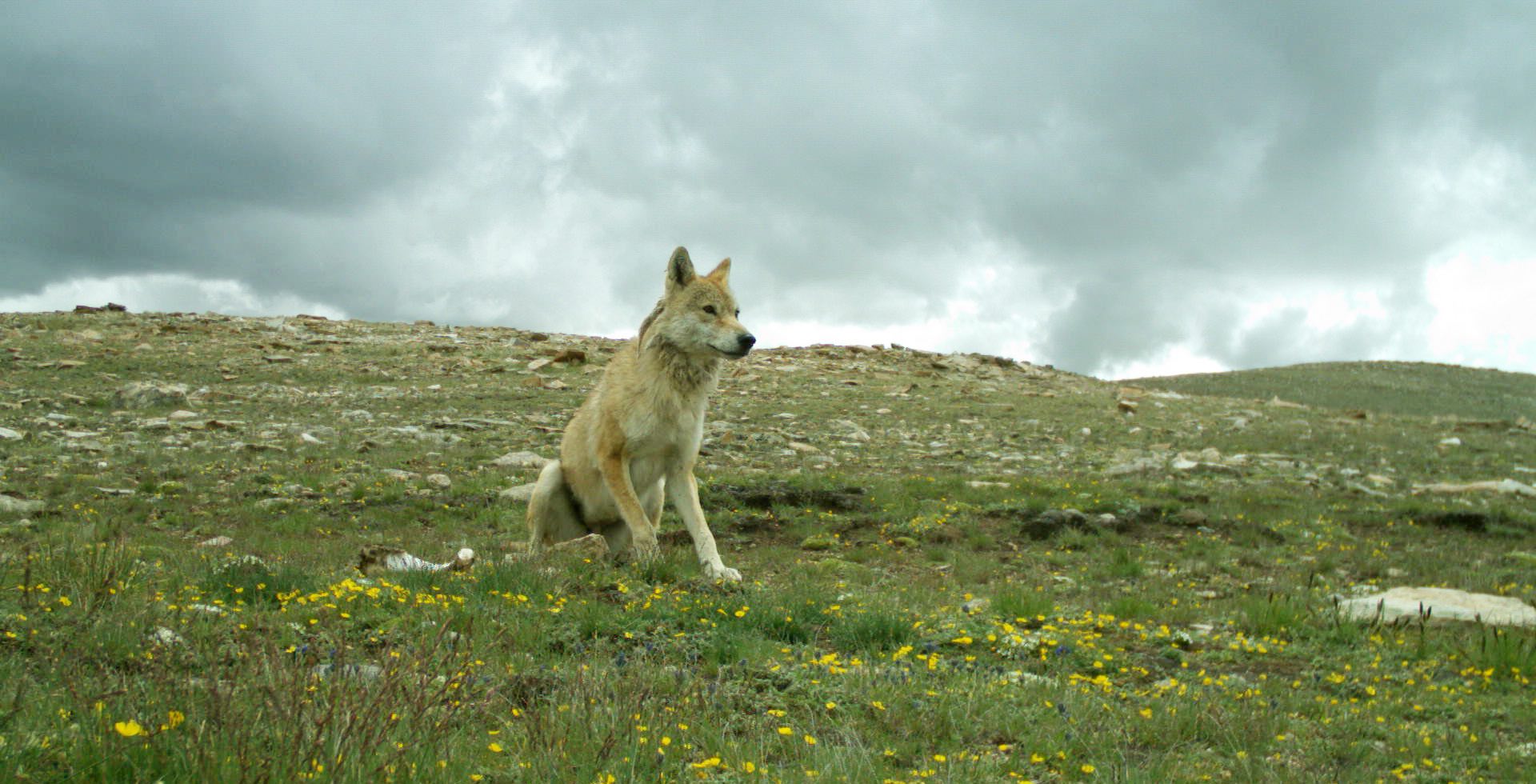News
An Asian wolf living on thin air
When the air gets thin, the going gets breathless (unless you adapt, as many trainee athletes know). David Macdonald celebrates the longest in a long line of WildCRU discoveries about the remarkable adaptations of wild Canids*, this time by remarkable field scientist Geraldine Werhahn. We are accustomed to bathing in Geraldine’s reflected glory: not only did she join WildCRU with a highly prestigious Oxford-Lady Margaret Hall-NaturalMotion Graduate Scholarship, but last spring she won world acclaim with an Award from Future for Nature. Now, as part of our investigation of speciation in wolves Geraldine and team have demonstrated a unique genetic adaptation to high altitude in Himalayan wolves. The results are published in Global Ecology and Conservation, and make riveting reading: The unique genetic adaptation of the Himalayan wolf to high-altitudes and consequences for conservation.
Of course, if the air is thin, and the going tough, for Himalayan wolves, it won’t take you long to realise that this is a tough environment for biologists too. Geraldine is not just insightful, she is as tough as they come, working on horseback, weeks away from comfort, and under the most gruelling (if beautiful) conditions imaginable, she is emerging as a major force for conservation in Nepal (working closely with distinguished Alumnus of the WildCRU Panther course Naresh Kusi, also a co-author of the new paper. The genetic data didn’t come easily – the team undertook several research expeditions across the Nepalese Himalayas. The outcome: the Himalayan wolf is genetically specialized to cope with the harsh conditions at high-altitudes where low oxygen levels challenge all life! In addition, these new results solidify our earlier suspicions that the Himalayan wolf forms an evolutionarily distinct wolf lineage – for those specially interested in wolves, this is fascinating, but it has much wider interest to any scientist interested in speciation. Our next task is to explore the formal taxonomic classification of these rare wolves.
Geraldine’s paper is not merely interesting, its useful. We present a conservation genetics toolkit to identify Himalayan wolves on the ground and monitoring their populations. The distribution and population size of this unique Asian wolf are still only vaguely understood. But it seems that the Himalayan wolf is found only in the high-altitude habitats of the Himalayas and the Tibetan Plateau. So the key to the mystery around this wolf may lie in its unique adaptation to life in the extreme high-altitudes. This could be an important driver for the evolutionary formation of the Himalayan wolf and its ongoing persistence alongside the more widely distributed Holarctic grey wolf.
There are still many mysteries to be solved around this top predator of the vast high altitude wilderness of Asia. But one thing is sure, now is the moment for action to conserve, in Nepal and beyond, this remarkable animal and its pristine habitats, and nobody is better placed than Geraldine to lead this challenge.
* For more, check out the book: The Biology and conservation of Wild Canids, DW Macdonald & C Sillero-Zubiri 2004
On the 1st February 2019 Smithsonian published the following article:
Should the Himalayan Wolf be Classified as a New Species?
The WildCRU team offers special thanks to all field team members including Pema Rikjin Lama, Tashi Namgyal Lama, Pemba Dorje Tamang, Kunjok Rangdol Tamang, Pasang Dorje Tamang, Tashi Dondup Lama, Bir Bahadur Sunar and Tshiring L. Lama. And we thank the Department of National Parks and Wildlife Conservation, the Ministry of Forests and Environment, Department of Forests, Kathmandu, the District Forest Office, Humla, Shey-Phoksundo National Park office, Dolpa and Kanchenjunga Conservation Area Management Council for permitting and supporting this research project.







